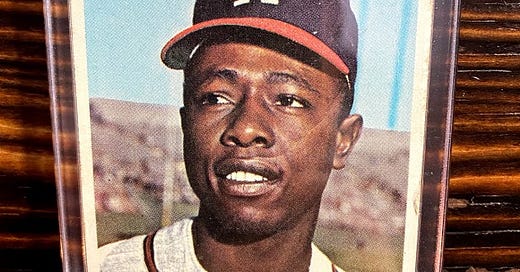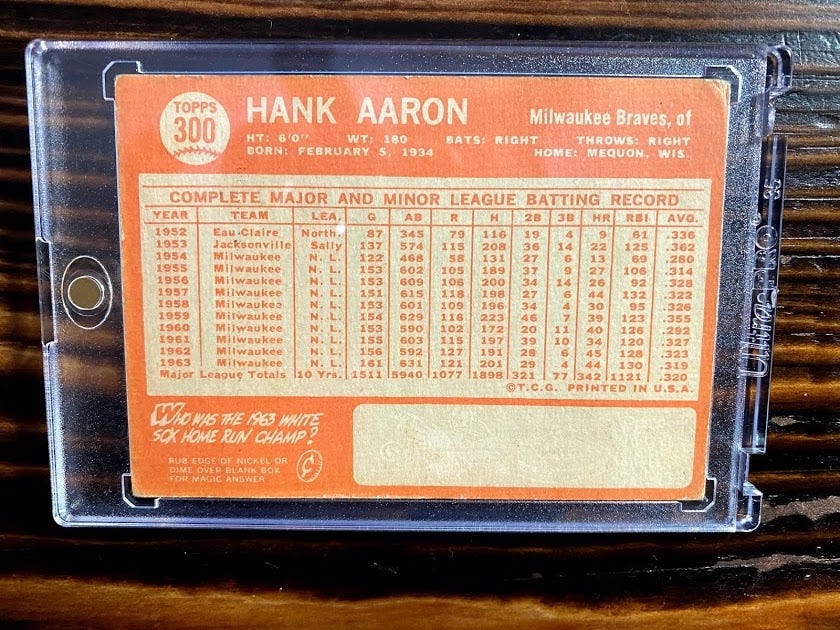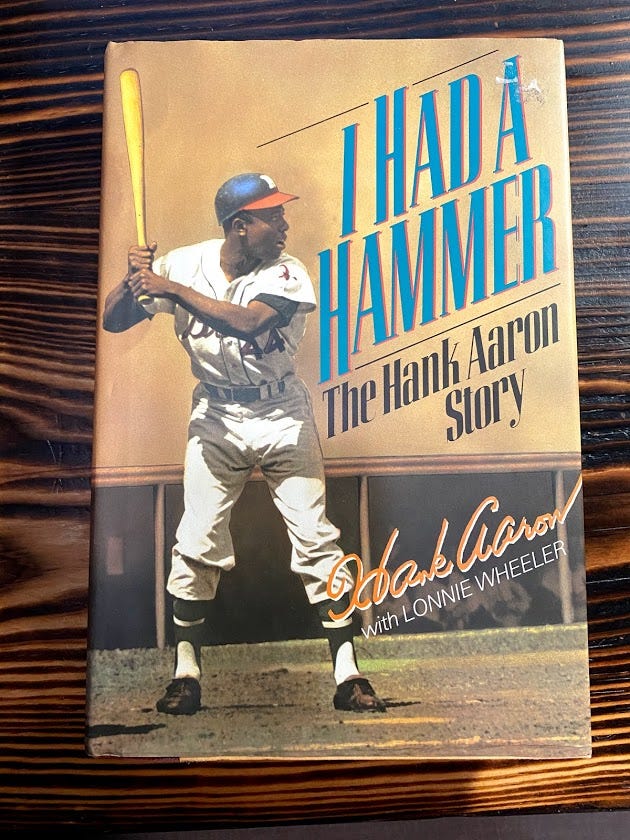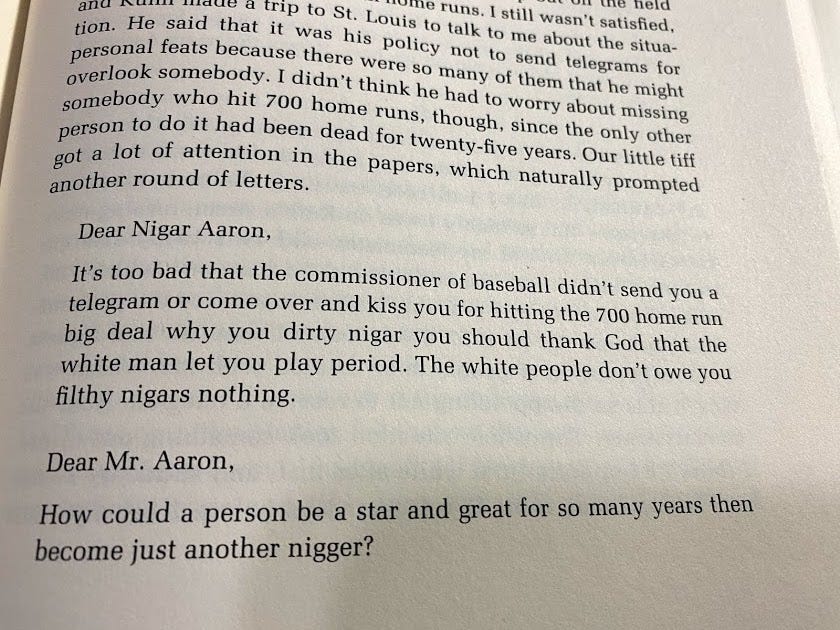Growing up as a kid in the 1970s and early 80s I was an avid baseball card collector. Games were not readily available via television in that era, so collecting baseball cards was one way to see and get to know the players. Today’s Instagram world means we no longer need baseball cards to bring us close to the players.
I still have some of my cards, mostly Dodgers, of course, though I rarely look at them. It comforts me to know they are in a box should I long to recall a childhood hero or memory. As I have aged, er, matured, I am drawn to reading baseball biographies, particularly those of players who I did not watch or barely remember. I relish the orderly chronology of a biography, taking the reader from a beginning point to an ending. A great biography weaves a narrative of a player's life, his struggles and adversities, and also his triumphs and successes. Authors such as Jane Leavy and David Maraniss are masters at this.
As I read certain baseball biographies, I was pulled toward wanting to own one of the player’s baseball cards, if for no other reason than to serve as a quick, visual reminder of their story and their journey. Hank Aaron was one of those significant players for whom I wanted a baseball card, especially after reading his autobiography I Had A Hammer, as well as Howard Bryant’s excellent The Last Hero: A Life of Henry Aaron.
The market for his 1954 rookie card, the ones collectors desire most, is/was way out of my price range. Instead, I settled on his 1964 card. The 1964 design appeals to me for its simplicity, allowing the card to pack so much into a 2.5-inch x 3.5-inch piece of cardboard.
The front of Aaron’s 1964 card is bright and projects sunlight at all hours of the day, a quality I especially appreciate while looking at it in the late night. The color of the blue hat, the white M, and the red bill against a green bottom and green Braves lettering reminds me of summer and the colors of the Fourth of July. His facial expression suggests to me the photographer’s frame shot immediately after this one would show him in a full smile.
The back of the card is filled with detailed statistics and career destinations - Eau Claire, Jacksonville, Milwaukee. A critical read of his statistics reveals amazing consistency. In 10 Major League seasons, Aaron did not bat below .280 nor higher than .355. He scored more than 100 runs every year except his rookie season. He played in anywhere between 151 and 161 games every year except his rookie. He would become a National League All-Star in 21 straight seasons! Remarkable.
But what Aaron’s 1964 baseball card does not tell us is what he endured en route to arguably the greatest baseball career of all-time. And that is why we need to read biographies.
Aaron’s 1964 card does not mention his time in the Negro Leagues, riding in rickety buses, staying in sketchy motels, and eating meals on a bus because the diners would not allow blacks to sit down and eat. It does not tell us that he left his Mobile, Alabama home with two dollars in his pocket and a couple of ham sandwiches his mother had prepared.
Aaron’s 1964 card tells us he played in Jacksonville in 1953, but it does not tell us that in the spring of 1947 the city of Jacksonville refused to allow the Dodgers to play in the town because they were fielding Jackie Robinson and John Wright, two black players.
His card does not tell the story of that year in Jacksonville and the South Atlantic League, along with black teammates Horace Garner and Felix Mantilla, being called N***** in most cities, especially Montgomery, Alabama.
“They had segregation down to an art in that town - the art of keeping the niggers down. It would be 100 degrees and black people would be standing on the sidewalks watching half-filled buses go by because there wasn’t any more room in the colored section.” (I Had a Hammer, 1991, p. 63)
As Aaron pursued the home run record in 1974, held by the legendary, almost mythical Babe Ruth, he received unconscionable amounts of hate mail and death threats. I checked Aaron’s 1975 baseball card, which I also own, and it does not mention this.
Despite this immense pressure and against all of the odds stacked against him, Aaron persevered and not only set the career home run mark with 755 (later eclipsed by Barry Bonds) but also the career RBI record with 2,297. In his career, Aaron played in 3,298 games, making 13,941 plate appearances.
So phenomenal was Aaron’s career that one would think my 1964 card would be worth cashing in for early retirement. Wrong. Let’s compare the market value of Aaron’s 1964 baseball card with that of his contemporary, Mickey Mantle. An eBay search of recently sold items for an ungraded VG condition, similar to mine, 1964 baseball cards reveals Aaron’s card can be purchased for between $40-50. Mantle’s card currently sells for three times that, with most sold auctions between $120-140.
Why?
Aaron was black and played in small-market Milwaukee. Mantle was white and played in New York City for a perennial World Series team. Aaron and the Braves beat Mantle and the Yankees in the 1957 World Series for his only championship (he played in one other). Mantle won 7 and played in 12. Aaron hit 755 home runs. Mantle hit 536.
Hank Aaron passed away on January 22, 2021. He was, to my way of thinking, the greatest baseball player ever. Neither his baseball card nor the value of the card will tell you why. Reading his biographies will.









What a great tribute to one of, if not the best ever!
Good tribute to a great man. BTW, some of those years he played in fewer than 154 games were before the 162 game seasons were initiated.